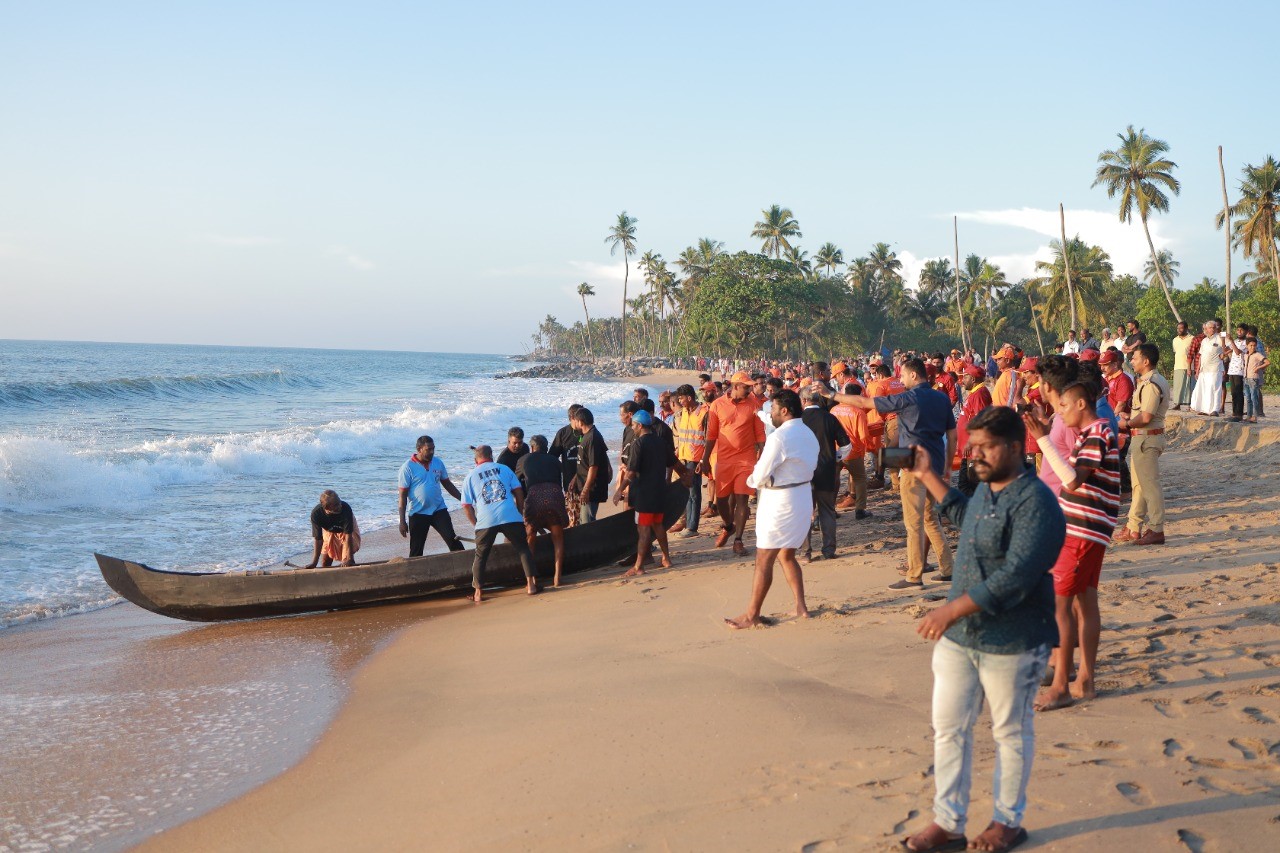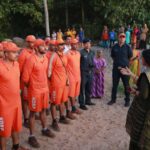Altogether 222 villages in state will soon be 'tsunami-ready', under a special UN-designed alertness programme.

A mock drill conducted as part of Tsunami Ready programme at Eriyad in Thrissur on 13 December. (Supplied)
It was 18 years ago, almost to the day, that a devastating tsunami hit coastal Kerala. Cut to the present: The state intends to be “tsunami ready” — i.e., alert to danger signals.
Under a certification programme of the UN’s Intergovernmental Oceanographic Commission (IOC), as many as 222 coastal villages in Kerala will be so prepared.
In the first phase, six villages — one each from Kozhikode, Thrissur, Kasaragod, Ernakulam, Alappuzha and Kollam — are already working towards achieving the certification.
And helping them in this effort is the Kerala State Disaster Management Authority (KSDMA).
KSDMA sees tsunami as one of the major coastal hazards that Kerala is vulnerable to and believes the “tsunami ready” initiative is just the tool the locals need meet the challenge.
“Surviving a tsunami depends on the ability of the people in the hazard zone to recognise warning signals, make correct decisions, and act quickly,” said Alfred Johny, KSDMA’s hazard analyst (oceanography).
“The Tsunami Ready Recognition Programme will prepare them to do this,” he told South First.
As of now, only two villages In India bear the “tsunami ready” tag, and both are from Odisha.
A performance-based programme at the community level, the initiative hinges on active collaboration of the public, community leaders, and national and local emergency management agencies.
Training programmes and tsunami mock drills have been conducted at the selected villages, with the locals, including children, pepped on basic disaster management, tsunami awareness, tsunami warning systems, and the dos and the don’ts once a tsunami warning is issued.

Helping conduct the training and mock drills were local body representatives, various state government departments such as fisheries, revenue and police and fire services, the National Disaster Response Force and the Kerala Civil Defence Corps, as well as voluntary organisations.
He also added that follow-up programmes including mapping tsunami hazard zones, and preparing tsunami evacuation maps and awareness material will soon be commenced.
Each selected village will have a Disaster Management Committee, with a Disaster Management Team under it.
These will be entrusted with conducting risk assessment, ensuring community-level preparedness, and coordinating specialised tasks like early warning dissemination, evacuation, and search and rescue, first aid, shelter management, water and sanitation, relief distribution, carcass disposal, trauma counselling, and damage assessment.
Communities have to meet 12 indicators to be recognised as being “tsunami ready”. These indicators, stipulated by the IOC, are grouped under three heads: Assessment, Preparedness, and Response.
A community tsunami emergency response plan is approved
The capacity to manage emergency response operations during a tsunami is in place
Redundant and reliable means to timely receive 24-hour official tsunami alerts are in place
Redundant and reliable means to timely disseminate 24-hour official tsunami alerts to the public are in place
It was the United States National Weather Service of the National Ocean and Atmospheric Administration that first introduced, way back in 2001, something called the “US Storm Ready recognition programme”. The UN “tsunami ready” is modelled on that.
The US initiative showed that voluntary participation in the programme has helped communities mitigate, prepare and plan for life-safety response actions when a tsunami occurs.
Through education and outreach, the public has learned to recognise tsunami threats as well as strategies to reduce their tsunami risk.
Then in 2015, IOC started promoting the Tsunami Ready Recognition Programme. The main goal of it is to build resilient communities through awareness and preparedness strategies that will protect life, livelihoods, and property from tsunamis in different regions.
However, the IOC the Tsunami Ready recognition does not mean that a community is tsunami-proof; it just implies that a community can or will perform at a certain level in the event of an actual tsunami.
The word “tsunami” is composed of the Japanese words tsu (meaning harbour) and nami (meaning “wave”).
Tsunamis are a series of waves, usually generated by the movement of the sea floor because of earthquakes, landslides, and volcanic eruptions.
Tsunami waves form only a small hump, barely noticeable and harmless, which generally travels at a very high speed of 500 to 1,000 km an hour.
Major tsunamis are produced by large (greater than 7 on the Richter scale) earthquakes associated with the movement of oceanic and continental plates.
When a powerful earthquake (magnitude 9.3) struck the coastal region of Indonesia on 26 December, 2004, the movement of the seafloor produced a tsunami above 30 metres (100 feet) along the adjacent coastline, killing more than 2.4 lakh people.
From this source, the tsunami radiated outward and within two hours had claimed 58,000 lives in Thailand, Sri Lanka, and India.
It claimed 171 lives as it hit various coastal villages of Kerala, as per data presented in the Legislative Assembly on 31 January, 2005.

Apr 25, 2024

Apr 25, 2024

Apr 25, 2024

Apr 25, 2024

Apr 25, 2024

Apr 25, 2024